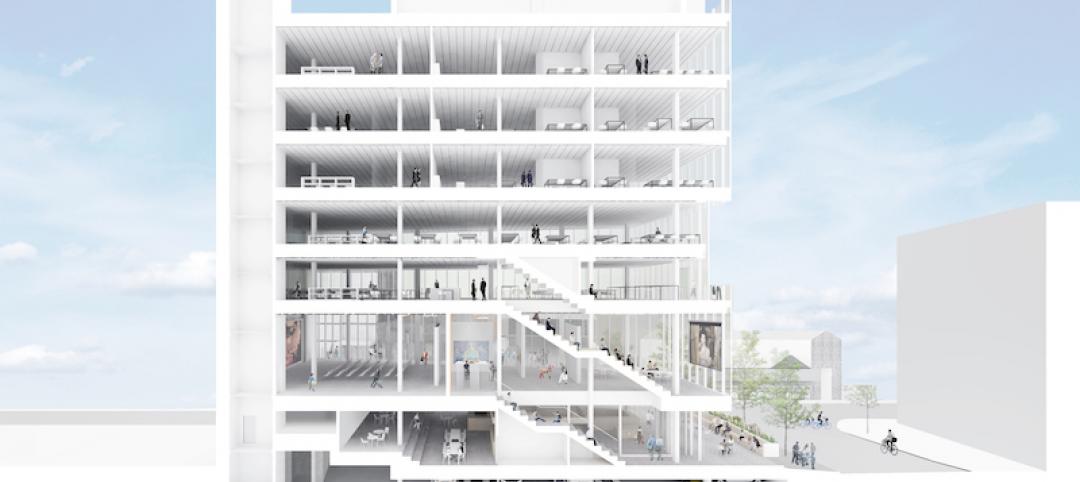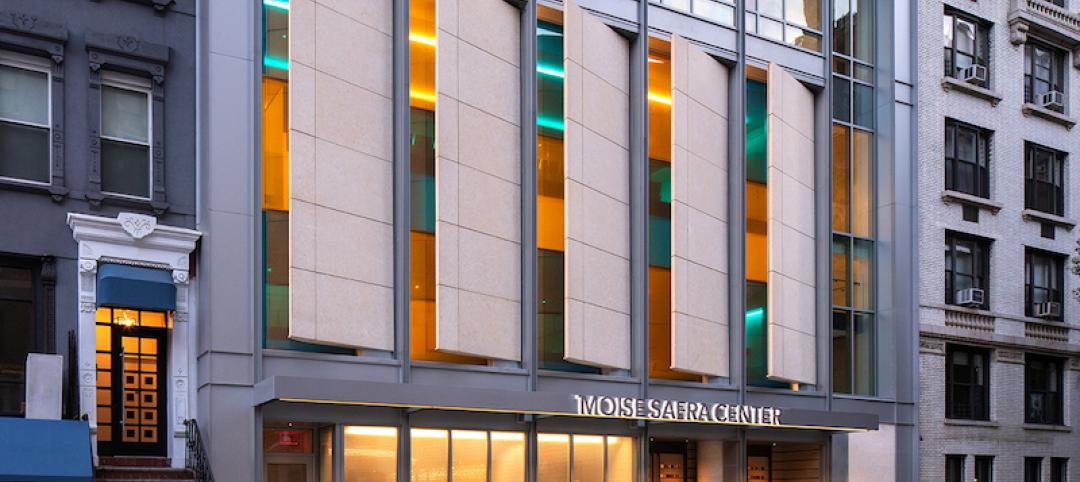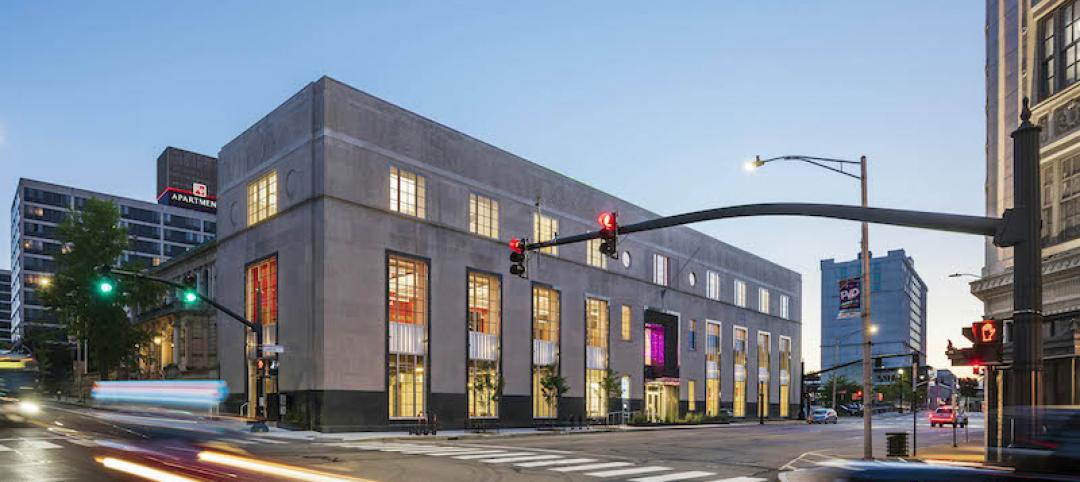The Children’s Museum & Theatre of Maine (CMTM) officially opened last Thursday, June 24, in its new 30,000-sf location at Thompson’s Point along the Fore River in Portland.
This location allows the facility to expand it programming and services in ways that its former 15,000-sf location, in Portland’s Arts District, restricted. The new building—offering the state-of-the-art Maddy’s Theatre with 100 seats, a STEM science center, a floor devoted to arts, culture, and community, and offices and meeting rooms—opens with limited capacity and other protocols in place to protect visitors and staff during the pandemic. Once it opens fully, the Museum and Theatre to reach over 200,000 visitors per year.
Bruner/Cott Architects led this project, which connects the CMTM to the site’s industrial shipping and railroad heritage. “We began this project nearly six years ago, building on our firm’s long history of museum and gallery design,” recalls firm Principal Jason Forney. “A true collaboration between our firm and our client has produced a building that embodies the Children’s Museum & Theatre of Maine’s mission and goals for its new venue, certain to attract visitors from near and far.”
The three-floor building’s proportions and window patterns are inspired by Thompson Point’s historic brick structures and steel cross-bracing. The exterior cladding of colorful metal shingles is arranged in a dynamic pattern. An outdoor play area is adjacent to the waterfront landscape.
Floor-to-ceiling glass surrounds the building’s 20-ft-high entry lobby, which connects the inside and outside and brings in natural light. The building's exhibit spaces incorporate visuals and programming that connect to Maine’s culture.
COST-SAVING SUSTAINABILITY

CMTM's new location, once the site of a railcar repair yard, was designed to blend in with its natural surroundings.
The project’s building team, which included construction manager Zachau Construction, employed sustainable strategies that addressed the challenges of a brownfield site that was once a railway repair yard. The project pre-loaded the building area to compact the soil and minimize off-site removal. Low wattage LED lighting was used throughout the building, and a VRF (variable refrigeration flow) system was installed for heating and cooling. The Museum site is also close to local, regional, and international public transportation.
To help pay for this project, the estimated construction cost of which was $7 million, the Children’s Museum & Theatre surpassed its $14 million fundraising goal, having raised over $15 million from more than 500 donors and the proceeds of the sale of its former building at 142 Free Street. CMTM worked with Nextstage Design to conceptualize and align its programming with its fundraising capabilities.
“As we move past the pandemic, we are enthusiastic about all the experiences our new building and its innovative, interactive exhibits and state-of-the-art theatre will bring to fans of our previous facility, as well as new visitors to Maine from across the nation and the world,” says CMTM Executive Director Julie Butcher.
Related Stories
Wood | May 14, 2021
What's next for mass timber design?
An architect who has worked on some of the nation's largest and most significant mass timber construction projects shares his thoughts on the latest design trends and innovations in mass timber.
Cultural Facilities | Apr 1, 2021
A Connecticut firm deploys design to assist underserved people and communities
Hartford, Conn.-based JCJ Architecture traces its roots to 1936, when the U.S. was just coming out of an economic depression and its unemployment rate was still 14%. In 2021, with the country trying to recover economically from the impact of the coronavirus, and with questions about social inequity entering the public debate as rarely before, JCJ has focused its design work on projects and clients that are committed to social responsibility and advocacy, particularly for underserved or marginalized communities.
Cultural Facilities | Mar 1, 2021
Moise Safra Center completes in New York City
The project will act as a second home for the Jewish community it serves.
Market Data | Feb 24, 2021
2021 won’t be a growth year for construction spending, says latest JLL forecast
Predicts second-half improvement toward normalization next year.
Giants 400 | Dec 16, 2020
Download a PDF of all 2020 Giants 400 Rankings
This 70-page PDF features AEC firm rankings across 51 building sectors, disciplines, and specialty services.
Giants 400 | Dec 3, 2020
2020 Cultural Facilities Giants: Top architecture, engineering, and construction firms in the U.S. cultural facilities sector
AECOM, Arup, and Populous head BD+C's rankings of the nation's largest cultural facilities sector architecture, engineering, and construction firms, as reported in the 2020 Giants 400 Report.
Government Buildings | Nov 13, 2020
Tax shortfalls nip government projects in the bud
Federal contracts are proceeding, but states and cities are delaying, deferring, and looking for private investment.
Cultural Facilities | Oct 13, 2020
Thailand’s Elephant Museum reinforces the bond between humans and beasts
The complex, in Surin Province, was built with 480,000 clay bricks.
Libraries | Sep 25, 2020
Major renovation to Providence’s downtown library is completed
The $29 million project adds light and collaborative space to a 67-year-old wing.
Cultural Facilities | Sep 24, 2020
America's 11 most endangered historic places - 2020 list
Annually, this list spotlights important examples of our nation’s architectural and cultural heritage that, without applied action and immediate advocacy, will be destroyed or face irreparable damage.

















